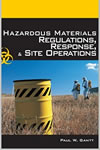All Articles
Addiction Issues & Substance Abuse
Land Use
Alcohol, Tobacco & Other Drugs
Life Expectancy - Life Care Planning
Appraisal & Valuation
Logistics - Reverse Logistics
Architecture
Marine - Maritime
Artificial Intelligence (AI) / Machine Learning (ML)
Marketing
Blockchain Information
Mediation
Child Witch Phenomenon
Meditation
Construction
Mining
Corrosion
Neuropsychology
Cosmetology: Hair / Makeup
Pain Management
Counseling
Patents
Digital Forensics
Pharmacy & Pharmacology
Discovery & Electronic Discovery
Politics
Elder Abuse
Pools and Spas (Recreational)
Engineering
Professional Malpractice
Exercise & Fitness
Psychiatry
Expert Witnessing
Public Speaking
Feng Shui
Real Estate
Finance
Recreation & Sports
Fires & Explosions
Risk Management
Foot / Ankle Surgery
Slip, Trip & Fall
Foreign Affairs - Geopolitics
Taxation
Healthcare Facilities - Hospitals
Telecommunication
International Trade
Transportation
Land Mapping - Surveying - Zoning
Workplace Violence
More...

MEDICAL-PAGE ARTICLES MAIN PAGE
. Contact Us if you are interested in having your work published on our website and linked to your Profile(s).
All Articles
Accident Prevention & Safety
Injury
Addiction Issues & Substance Abuse
International Trade
Aquatics Safety
Land Mapping - Surveying - Zoning
Archaeology - Archeology
Life Expectancy - Life Care Planning
Architecture
Logistics - Reverse Logistics
Banking
Manufacturing
Blockchain Information
Marine - Maritime
Business Consulting
Market Research
Computer Forensics
Mediation
Corrosion
Medical Malpractice
Criminology
Oil & Gas
Crisis Management
OSHA
Design
Patents
Documentation Examination & Analysis
Politics
Domestic Violence
Radiology
Electrical - Electrocution
Real Estate
Elevators - Escalator - Automatic Doors
Recreation & Sports
Engines (Combustion - Diesel)
Search Engine Optimization (SEO)
Ethics / Ethical Duties
Securities
Exercise & Fitness
Slip, Trip & Fall
Finance
Speech-Language Pathology
Food & Beverage
Telecommunication
Foreign Affairs - Geopolitics
Terrorism - Homeland Security
Healthcare Facilities - Hospitals
Transportation
Human Resources
Underwriting
More...
Featured Articles
There are no active articles here at this time. Please use the search bar, try another category, or contact us if you would like to contribute an article.
This Article is unavailable. Contact Us
Search articles by title, description, author etc.
Sort Featured Articles
Featured resources
Why Not You
by Richard Arlington, III, et al
The Role of Expert Witnesses in...
by Thomas J. Berger, MD, et al
Hazardous Materials: Regulations,...
by Paul Gantt
Follow us










